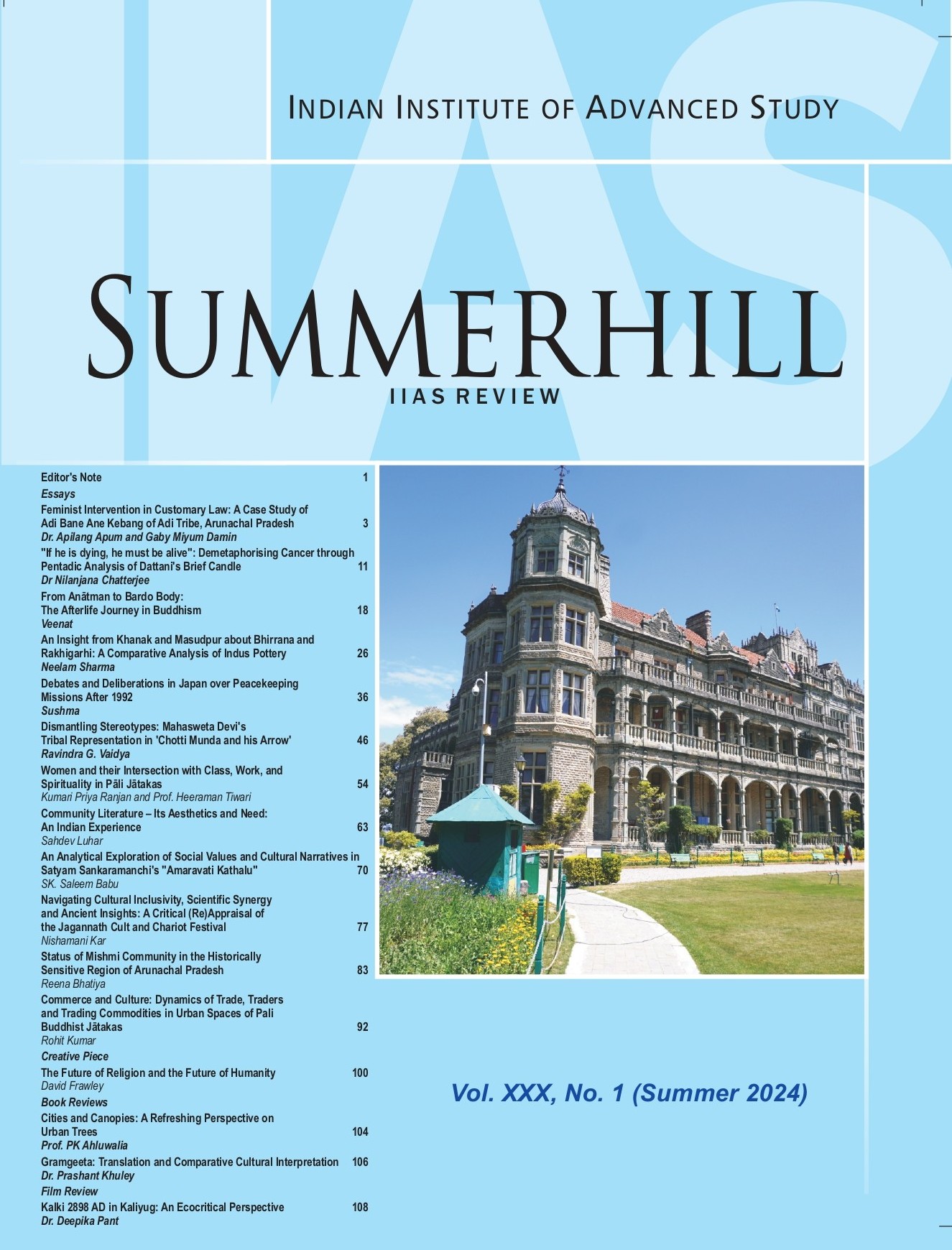Dismantling Stereotypes
Mahasweta Devi’s Tribal Representation in ‘Chotti Munda and his Arrow’
DOI:
https://doi.org/10.70752/ShIIASR.30.1.2024.46-53Keywords:
Tribal Representation, Dismantling Stereotypes, Organic Intellectual, Organic MechanismAbstract
Tribal representation in varied forms of literature is either extremely utopian or dehumanizing. In every expression, it seems to move away from the real state of tribal existence. Even, seemingly radical representations loom up towards victimhood and consequent tribal resentment, which quite often, is an outcome of external intellect or (non-tribal) forces. Further, it is characterized and differentiated based on social positioning i.e. whether the person who represents or speaks for them is either insider or outsider. In either case, it is characterized by prevalent stereotypes. Authentic representation of a subaltern group would refer to organic portrayals projected through the employment of organic mechanisms by an organic intellectual. The present research paper exploring nuanced tribal representation in ‘Chotti Munda and His Arrow’ sets out to show how Devi dismantles prevalent stereotypes hitherto involved in tribal representation. Particular focus is on how Mahasweta Devi blurs the distinction involved in social positioning.





